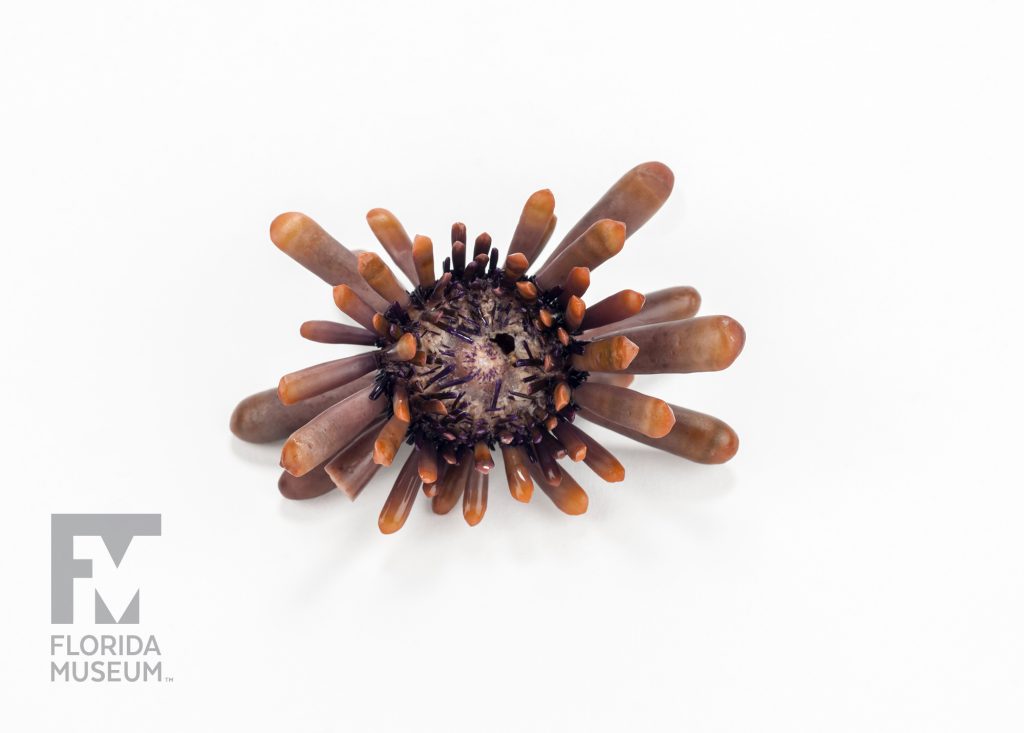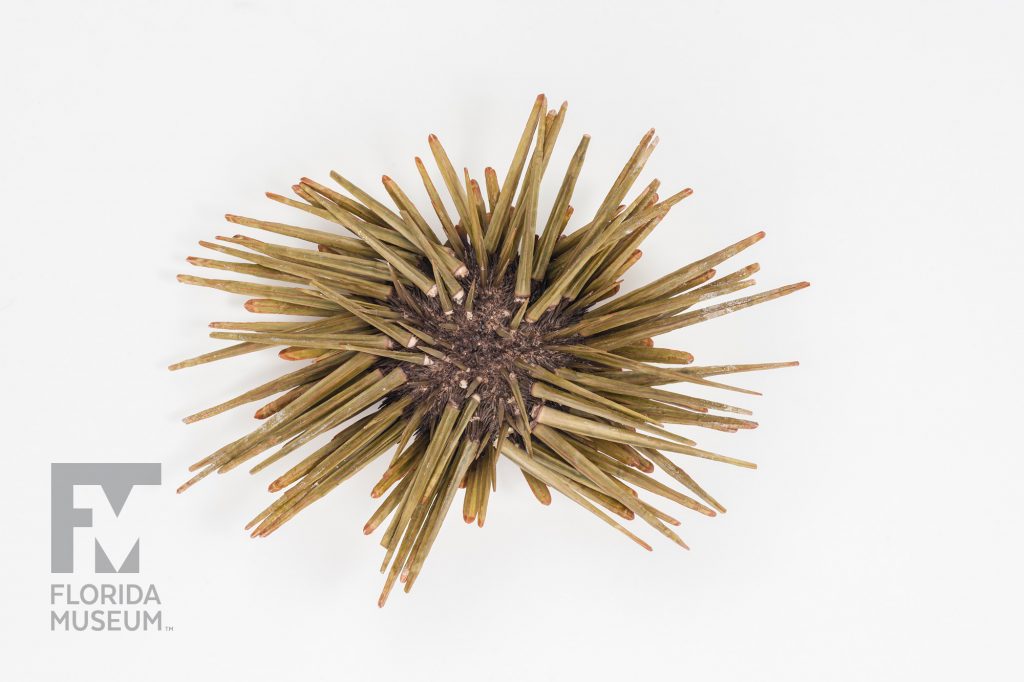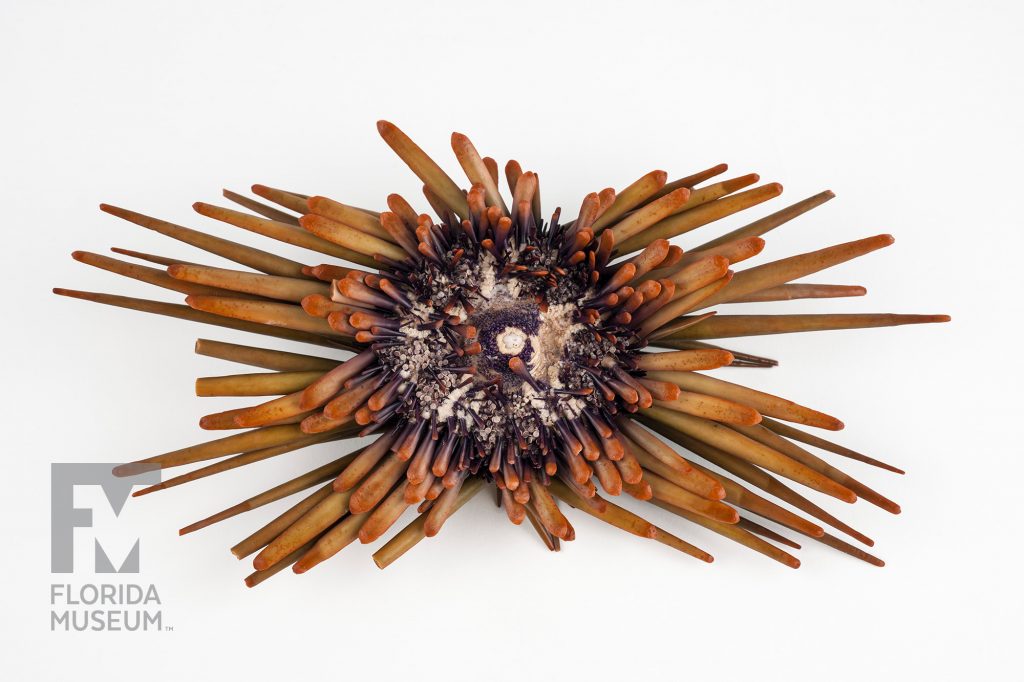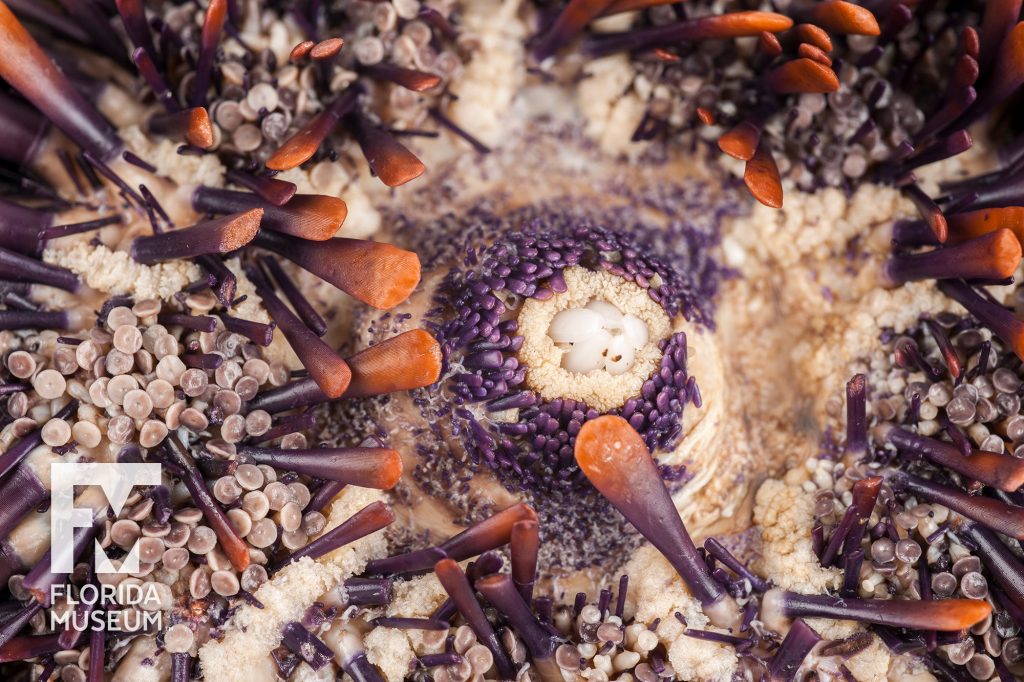Cryptic species – species that look alike – present a challenge for scientists who classify organisms. DNA studies have shown that these two Pencil Urchins, known by the same name, are actually two different species.
Summary
Pencil Urchins
Heterocentrotus trigonarius
From La Reunion Island, Indian Ocean, Aug. 2007
Heterocentrotus trigonarius
From Tuamotu Islands, southern Pacific Ocean, Jan. 2010
Collection
Story
These are some of the most spectacular sea urchins in the world. They are huge, as you can see; they have very large spines that are thick; they are made into jewelry; they are abundant on reefs; visually striking when divers and people encounter them; and really well-known.
There are two species known to science. One was described by the father of all taxonomy, Linnaeus, and the second one was described by the father of invertebrate zoology, Lamarck. And these two species have remained the two species in this genus Heterocentrotus for the past 250-plus years.
Well we started looking at these animals and we were struck by the variation that they showed and we tested to see if two species were all there was. We used DNA for the purpose; we sequenced many specimens, and lo and behold the DNA showed that some of the subtle variants that we were observing had a genetic basis.
What does that mean? That means that two very similar-looking animals were actually different species. They did not interbreed with each other, so as a result they develop their own “DNA fingerprints” so to speak, and we now have a third species of slate pencil urchin to stand beside the two named by Linnaeus and Lamarck.
This kind of research again just underscores how little we know about the ocean and how genetic techniques — DNA sequencing — is helping us to interpret things that we missed as just visual observers in the past.
Gustav Paulay
Curator, Invertebrate Zoology*
Florida Museum of Natural History
Exhibit
On display Sept. 23, 2017-Jan. 7, 2018, Rare, Beautiful & Fascinating: 100 Years @FloridaMuseum celebrated the Museum’s rich history. Each Museum collection was asked to contribute its most interesting items and share the stories that make them special. Though the physical exhibit is closed, this companion website remains online, providing an opportunity to experience the Florida Museum’s most treasured specimens.
Exhibit Area: Looking Ahead
Theme: DNA Discoveries
 Want to see more? Explore more than 300 breathtaking color photos of plants, animals, fossils and cultural heritage materials from the Florida Museum of Natural History’s collections in the award-winning book All Things Beautiful available from the University Press of Florida.
Want to see more? Explore more than 300 breathtaking color photos of plants, animals, fossils and cultural heritage materials from the Florida Museum of Natural History’s collections in the award-winning book All Things Beautiful available from the University Press of Florida.
*This title was accurate at the time the exhibit was on display in 2017. Please visit the collection website to verify current staff and student information.



